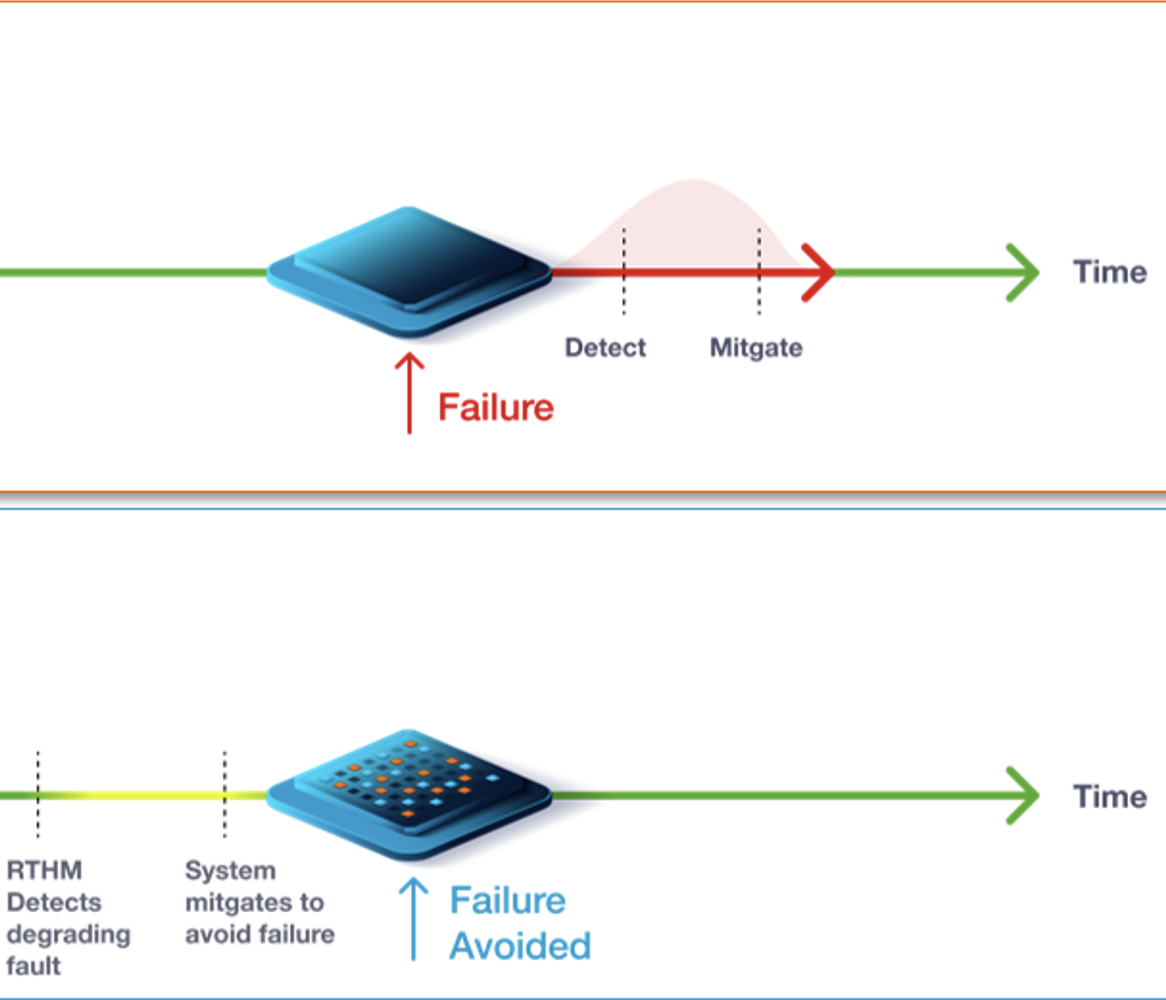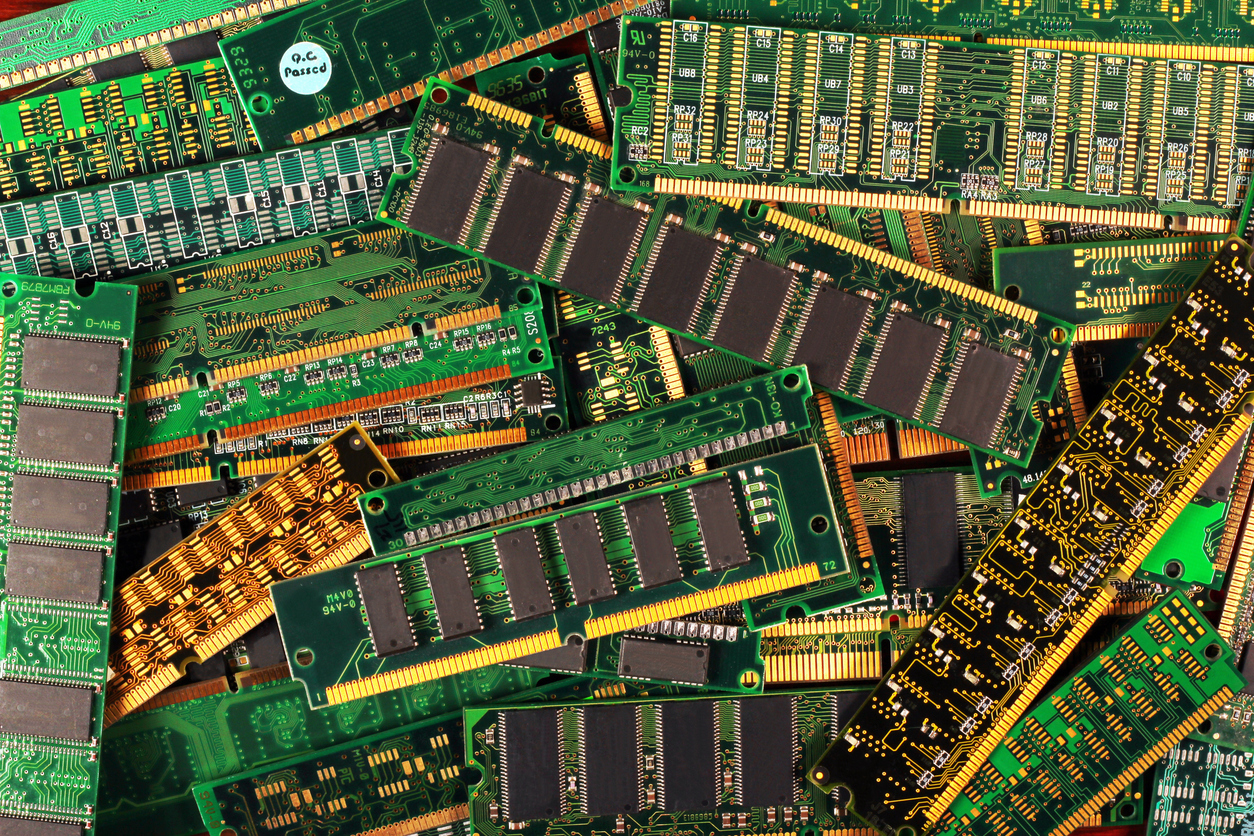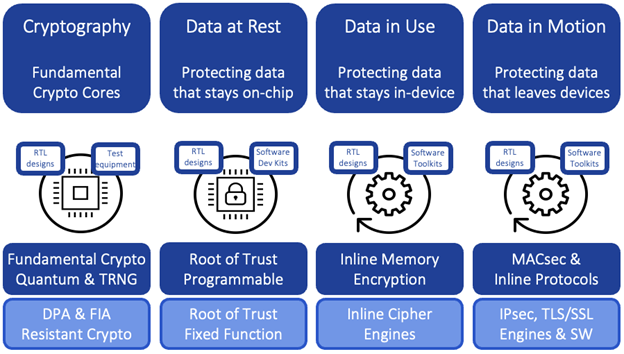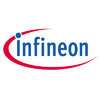Add office photos
Employer?
Claim Account for FREE
Rambus
4.9
based on 3 Reviews
Company Overview
Company Locations
About Rambus
Founded in1990 (35 yrs old)
India Employee Count--
Global Employee Count--
HeadquartersSunnyvale,California, United States
Office Locations
--
Websiterambus.com
Primary Industry
Other Industries
Are you managing Rambus's employer brand? To edit company information,
claim this page for free
Rambus Incorporated, founded in 1990, is an American technology company that designs, develops and licenses chip interface technologies and architectures that are used in digital electronics products.
Managing your company's employer brand?
Claim this Company Page for FREE
Rambus Ratings
based on 3 reviews
Overall Rating
4.8/5
How AmbitionBox ratings work?
5
2
4
1
3
0
2
0
1
0
Category Ratings
5.0
Skill development
4.8
Salary
4.8
Promotions
4.8
Work satisfaction
4.4
Work-life balance
4.3
Company culture
4.2
Job security
Rambus is rated 4.8 out of 5 stars on AmbitionBox, based on 3 company reviews. This rating reflects a generally positive employee experience, indicating satisfaction with the company’s work culture, benefits, and career growth opportunities. AmbitionBox gathers authentic employee reviews and ratings, making it a trusted platform for job seekers and employees in India.
Read more
Rambus Reviews
Compare Rambus with Similar Companies
Change Company | Change Company | Change Company | ||
|---|---|---|---|---|
Overall Rating | 4.9/5 based on 3 reviews | 3.7/5 based on 547 reviews | 3.8/5 based on 982 reviews | 3.3/5 based on 353 reviews |
Highly Rated for | Skill development Salary Promotions | No highly rated category | Salary | Salary |
Critically Rated for | No critically rated category | Promotions Skill development Work satisfaction | No critically rated category | Job security Promotions Company culture |
Primary Work Policy | - | Permanent work from home 72% employees reported | Work from office 58% employees reported | Work from office 89% employees reported |
Rating by Women Employees | - no rating available | 3.6 Good rated by 159 women | 3.9 Good rated by 164 women | 3.4 Average rated by 71 women |
Rating by Men Employees | - no rating available | 3.7 Good rated by 363 men | 3.8 Good rated by 731 men | 3.3 Average rated by 247 men |
Job security | 4.2 Good | 3.3 Average | 3.6 Good | 2.5 Poor |
View more
Rambus Salaries
Rambus salaries have received with an average score of 4.8 out of 5 by 3 employees.
Verification Engineer
(4 salaries)
Unlock
₹11.5 L/yr - ₹12.6 L/yr
Technical Writer
(4 salaries)
Unlock
₹6.5 L/yr - ₹8.3 L/yr
Finance Manager
(3 salaries)
Unlock
₹23.4 L/yr - ₹37 L/yr
Member Technical Staff
(3 salaries)
Unlock
₹14 L/yr - ₹17 L/yr
Analog Layout Engineer
(3 salaries)
Unlock
₹14.5 L/yr - ₹29 L/yr
Mts1
(2 salaries)
Unlock
₹17 L/yr - ₹21.7 L/yr
Senior MTS
(2 salaries)
Unlock
₹15.2 L/yr - ₹19.4 L/yr
Senior Content Writer
(1 salaries)
Unlock
₹16.2 L/yr - ₹20.7 L/yr
Senior Information Security Analyst
(1 salaries)
Unlock
₹9 L/yr - ₹11.5 L/yr
Principal Engineer
(1 salaries)
Unlock
₹47.5 L/yr - ₹52.5 L/yr
Rambus Jobs
Popular Designations Rambus Hires for
Analog Engineer
Create job alerts
Senior Payroll Analyst
Create job alerts
Senior Internal Audit Analyst
Create job alerts
Popular Skills Rambus Hires for
Current Openings
Rambus News
View all
Enabling Next-Generation Automotive Zonal Architecture With MIPI
- The evolution of automotive architecture has progressed through distributed, domain-centralized, and zonal architecture stages to accommodate increasing vehicle complexity.
- Zonal architecture in the automotive industry simplifies wiring and consolidates functions through modular zonal gateways distributed across the vehicle.
- Challenges for manufacturers in transitioning to zonal architecture include system integration complexities and ensuring seamless communication.
- MIPI features like CSI-2’s Always-On Sentinel Conduit and Multi-Pixel Compression address power efficiency and data handling in automotive systems.
- CSI-2’s RAW-28 color-depth pixel encoding and Smart Region of Interest enhance image quality and enable efficient AI-based vision inference algorithms.
- EMI concerns in automotive systems are mitigated by MIPI’s D-PHY v3.5 specification with features like the embedded clock mode.
- MIPI CSI-2 offers Unified Serial Link for high-bandwidth, low-latency communication, and Latency Reduction and Transport Efficiency for minimal data processing delays.
- MIPI CSI-2’s compatibility with short and long-reach solutions and features like the CSI-2 Application Stream Encapsulation Protocol enhance data transmission flexibility.
- The shift to zonal architecture in automotive technology, supported by MIPI CSI-2 advancements, paves the way for more efficient and advanced vehicle systems.
- Rambus, a leading provider of MIPI IP solutions, offers expertise and customization services to support zonal architecture system designs.
Semiengineering | 13 Mar, 2025

Accelerating Time To Market For The Software-Defined Vehicle With An Integrated Hardware Security Module Solution
- The software-defined vehicle (SDV) presents both opportunities and challenges for the automotive industry.
- Hardware Security Modules (HSMs) have become crucial in ensuring automotive cybersecurity.
- An integrated hardware security module (iHSM) solution developed by ETAS and Rambus offers a pre-integrated, pre-validated SW-HW security stack for automotive silicon designs.
- The iHSM solution enables secure boot, secure communication, secure data store, key store, and more to enhance safety and security in the automotive industry.
Semiengineering | 7 Mar, 2025

Silent Data Errors Still Slipping Through The Cracks
- Silent data corruption errors in large server farms have become a major concern of cloud users, hyperscalers, processor manufacturers and the test community.
- Silent data errors (also called silent data corruption errors) are hardware errors that occur when an incorrect computational result from a processor core goes undetected by the system.
- Silent data errors are not a new type of failure or caused by a new type of defect, but they are more noticeable.
- Both Google and Meta sounded the alarm about SDC errors a few years ago, and the extent of the problem boils down to 1 in 1,000 machines in a data center fleet having a silent data error.
- These silent data errors also have become more prevalent due to ever-shrinking transistors fabricated near their physical limits, huge numbers of cores in data centers running identical code, and the limitations in testing hugely complex systems.
- Effective screening and testing can help to detect SDCs, both during fabrication and during field use.
- Stress testing is a powerful play here.
- Systems are likely to get more complex, so one key in dealing with SDEs may lie in developing more fault-tolerant systems with superior error correction mechanisms and built-in resiliency.
- ‘In the future, we’re going to be talking about reliability as a first-class design parameter in architectures,’ said Rambus’ Woo.
- And while it’s not clear that the industry will unravel all the root cause contributors to silent data errors, strategies to identify, check/verify, diagnose and test for SDEs are well underway.
Semiengineering | 11 Feb, 2025

Automotive Security Shifts To The System Level
- As the amount of semiconductor and software content continues to increase, so does the number of over-the-air updates and connections to edge-based servers and services, adding a variety of new vectors for attacks.
- Properly securing vehicles requires engineers to first identify all the possible connection points.
- In the strictest sense, there’s only one direct attack vector on a car, according to David Glasco, vice president for compute solutions group at Cadence — the WiFi through which all software updates are uploaded.
- The migration toward holistic security now includes roots of trust installed in ICs located throughout the car’s systems.
- “Security is just like safety,” he said. “Security is the ultimate. It is the top priority.
- The challenge for automakers is understanding how these systems of systems will behave both individually and together, and that may require security training as a pre-requisite for any facet of automotive design.
- SDVs are booming, but designing hardware that can run software updates a decade in the future is a huge challenge.
- The core of all security comes down to proper, strong cryptography.
- “Having multiple environments is very similar to having different privilege levels within the CPU structure, which allows you to assign a very low privilege, for example, to a third-party app,” he said.
- The international standard has been proven effective in automotive functional safety and has begun to spread to other markets.
Semiengineering | 6 Feb, 2025

Automotive Outlook 2025: Ecosystem Pivots Around SDV
- The automotive industry is shifting towards the software-defined vehicle architectures (SDV) that will change how automakers design, source, and use automotive chips.
- SDV provides various benefits to automakers because it can reduce manufacturing costs, upgrade the operational platform quickly, support scalability and flexibility, and deliver advanced user experience.
- SDV requires software-first development and a shift from the mechanical and hardware-centric point of view to software-centralized infrastructure that can build and integrate the hardware accordingly.
- This shift involves creating a zonal architecture with powerful central CPUs to consolidate electronic control units (ECUs) into fewer, more powerful platforms that centralize processing resources in vehicles.
- The zonal architecture enables the integration of advanced technologies such as AI and autonomous driving systems, and it simplifies the vehicle design process while reducing complexity, weight, and cost.
- Chip vendors are building multi-die licensable devices featuring multiple chips in a single package, allowing the creation of advanced products using advanced packages at 3nm and a range of chiplets from different vendors.
- SDV enhances AI use in the vehicle, delivering an advanced user experience that learns from driver behaviors and enhances automated driving systems with end-to-end self-supervised learning and advanced AI in the vehicle.
- Software-defined development speeds up the introduction of new technologies that OEMs and Tier Ones are embracing. However, OEMs and Tier Ones must adapt to software-first development with a focus on security since the distribution of software centrally intensifies security issues.
- SDV makes it possible to develop software independently within the cloud on servers and substantially reduces the development time and cost with a level of flexibility and scalability that traditional hardware development cannot match.
- Virtual platforms and virtual prototypes are accelerating the software and silicon development cycles, simultaneously designing the hardware and software, testing them for security, scalability, flocking everything together into a scalable E/E architecture for the whole car.
Semiengineering | 6 Feb, 2025

Secure Networking With MACsec, IPsec, And TLS
- MACsec, IPsec, and TLS, each designed to safeguard communications at different levels of the network stack.
- MACsec, operates at Layer 2 of the OSI model, protecting data as it travels over Ethernet connections.
- MACsec uses AES-GCM encryption to safeguard Ethernet frames, ensuring data confidentiality and integrity.
- IPsec (Internet Protocol Security) operates at Layer 3, protecting data as it traverses entire networks, including the Internet.
- IPsec provides a flexible security solution that encrypts communication between devices regardless of how they are connected.
- TLS (Transport Layer Security) operates at Layer 4 and above, encrypting communication between clients and servers.
- TLS protects data at the application level and ensures secure browsing, financial transactions, and messaging services.
- Choosing the right security protocol depends on the network environment and performance requirements.
- MACsec is ideal for securing Ethernet links, IPsec provides robust encryption for VPNs and large-scale IP networks, and TLS remains the go-to solution for securing application-layer communications.
- Rambus provides high-performance protocol engines and toolkits to implement MACsec, IPsec, and TLS efficiently.
Semiengineering | 6 Feb, 2025

Choosing The Right Memory Solution For AI Accelerators
- High Bandwidth Memory (HBM) is the go-to solution for AI training, offering revolutionary 2.5D/3D architecture and immense memory bandwidth capability.
- LPDDR memory is a power-efficient choice for on-device AI inference, with low power consumption and high capacity.
- GDDR memory is a high-speed option for AI inference workloads, providing high bandwidth, low latency, and reliability.
- The choice of memory solution depends on the specific AI workload, with HBM ideal for training, LPDDR suited for endpoint inference, and GDDR suitable for edge servers and PCs.
Semiengineering | 16 Jan, 2025

Cryptography Does Not Equal Security
- Cryptography is not equivalent to security as it is only a part of a security implementation.
- To build a threat assessment, it is important to identify what needs to be protected and what potential attacks may occur.
- Assets can be categorized as Data-at-Rest, Data-in-Motion, and Data-in-Use, each requiring different cryptographic techniques.
- Data-at-Rest cores, such as Root of Trust, provide system-wide security by enabling key management services and platform security.
Semiengineering | 9 Jan, 2025

Powered by
Compare Rambus with

Intel
4.2

Advanced Micro Devices
3.7

Micron Technology
3.6

Texas Instruments
4.1

Analog Devices
4.0

Marvell Technology
3.7

Infineon Technologies
3.8

Amazon
4.1

Uber
4.2

Fareportal
3.4

OLX
3.8

Groupon
3.2

Uplers
4.0

Expedia Group
3.8

Metric Stream Infotech
3.1

Airbnb
3.7

LinkedIn
4.3

Avis
3.9

Facebook
4.3

Yahoo
4.6
Edit your company information by claiming this page
Contribute & help others!
You can choose to be anonymous
Companies Similar to Rambus

Advanced Micro Devices
Internet, Hardware & Networking, Semiconductors, Software Product
3.7
• 263 reviews

Micron Technology
Semiconductors, Electronics Manufacturing
3.6
• 371 reviews

Texas Instruments
Internet, Manufacturing, Electronics, Semiconductors
4.1
• 185 reviews

Analog Devices
Internet, Manufacturing, Electronics, Semiconductors
4.0
• 90 reviews

Marvell Technology
Hardware & Networking, Semiconductors, Software Product
3.7
• 28 reviews

Infineon Technologies
Internet, Manufacturing, Electronics, Hardware & Networking, Semiconductors, Software Product
3.8
• 212 reviews
Rambus FAQs
When was Rambus founded?
Rambus was founded in 1990. The company has been operating for 35 years primarily in the Internet sector.
Where is the Rambus headquarters located?
Rambus is headquartered in Sunnyvale,California.
What are the pros of working in Rambus?
Working at Rambus offers several advantages that make it an appealing place for employees. The company is highly rated for skill development, promotions / appraisal and salary & benefits, based on 3 employee reviews on AmbitionBox.
Stay ahead in your career. Get AmbitionBox app

Helping over 1 Crore job seekers every month in choosing their right fit company
75 Lakh+
Reviews
5 Lakh+
Interviews
4 Crore+
Salaries
1 Cr+
Users/Month
Contribute to help millions
Get AmbitionBox app


